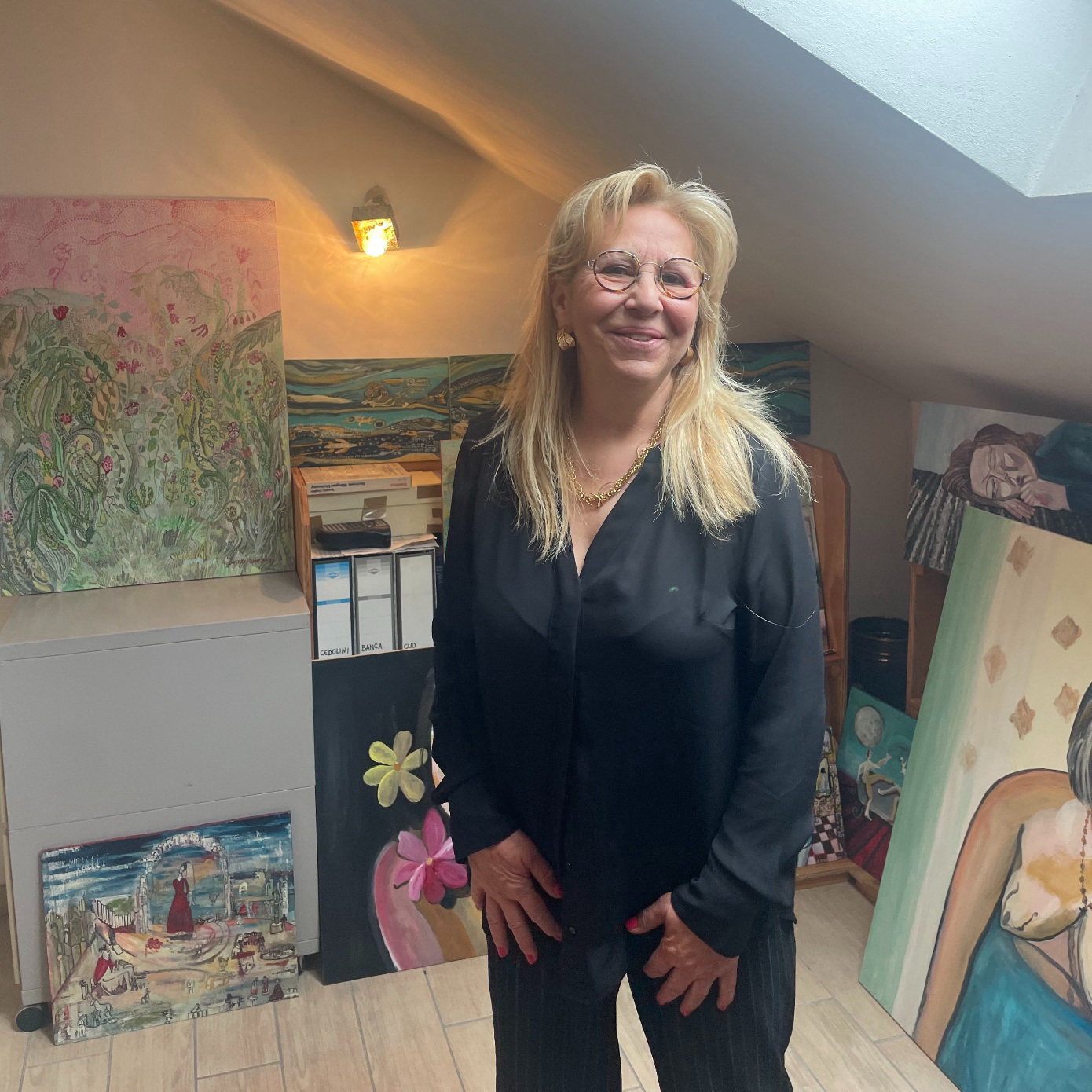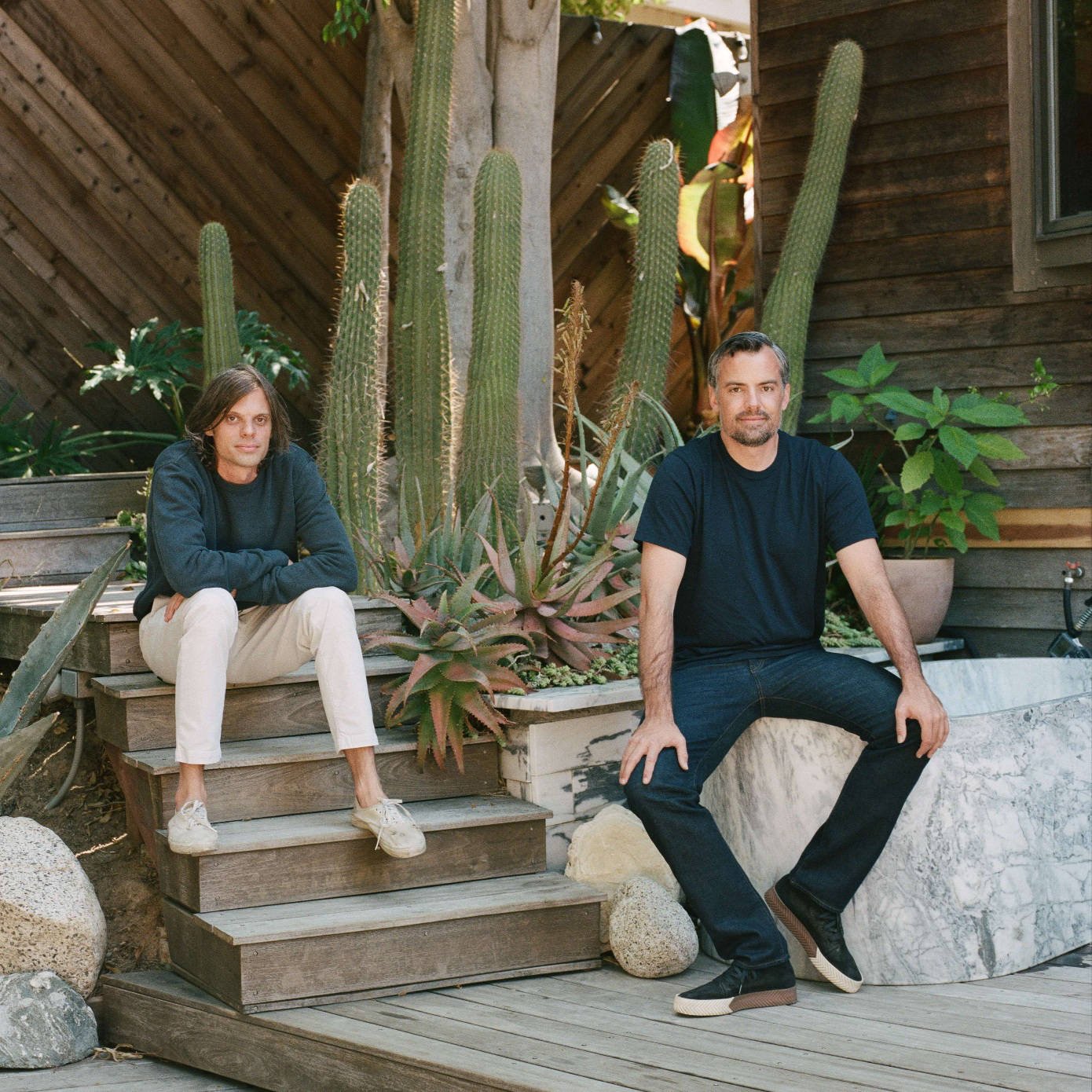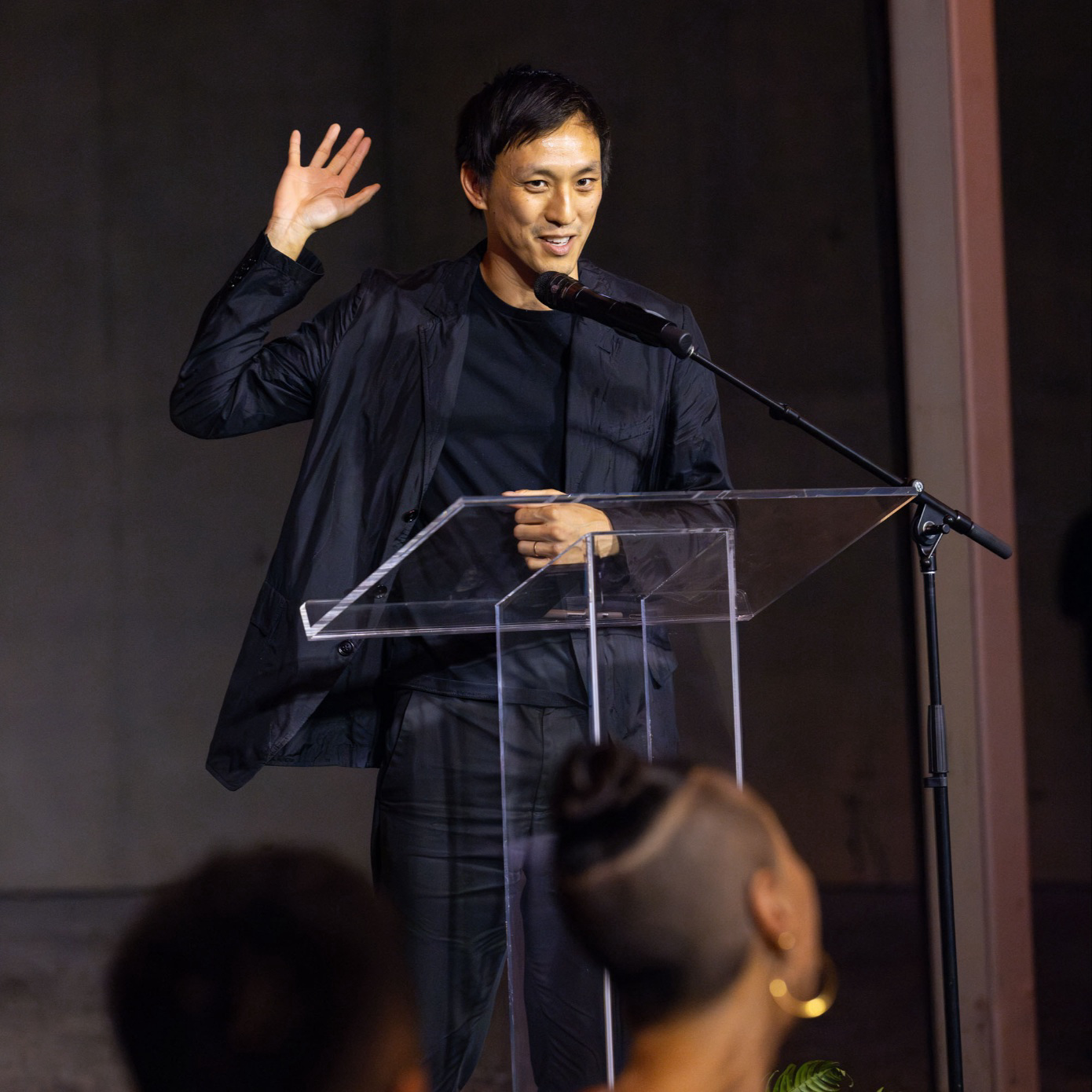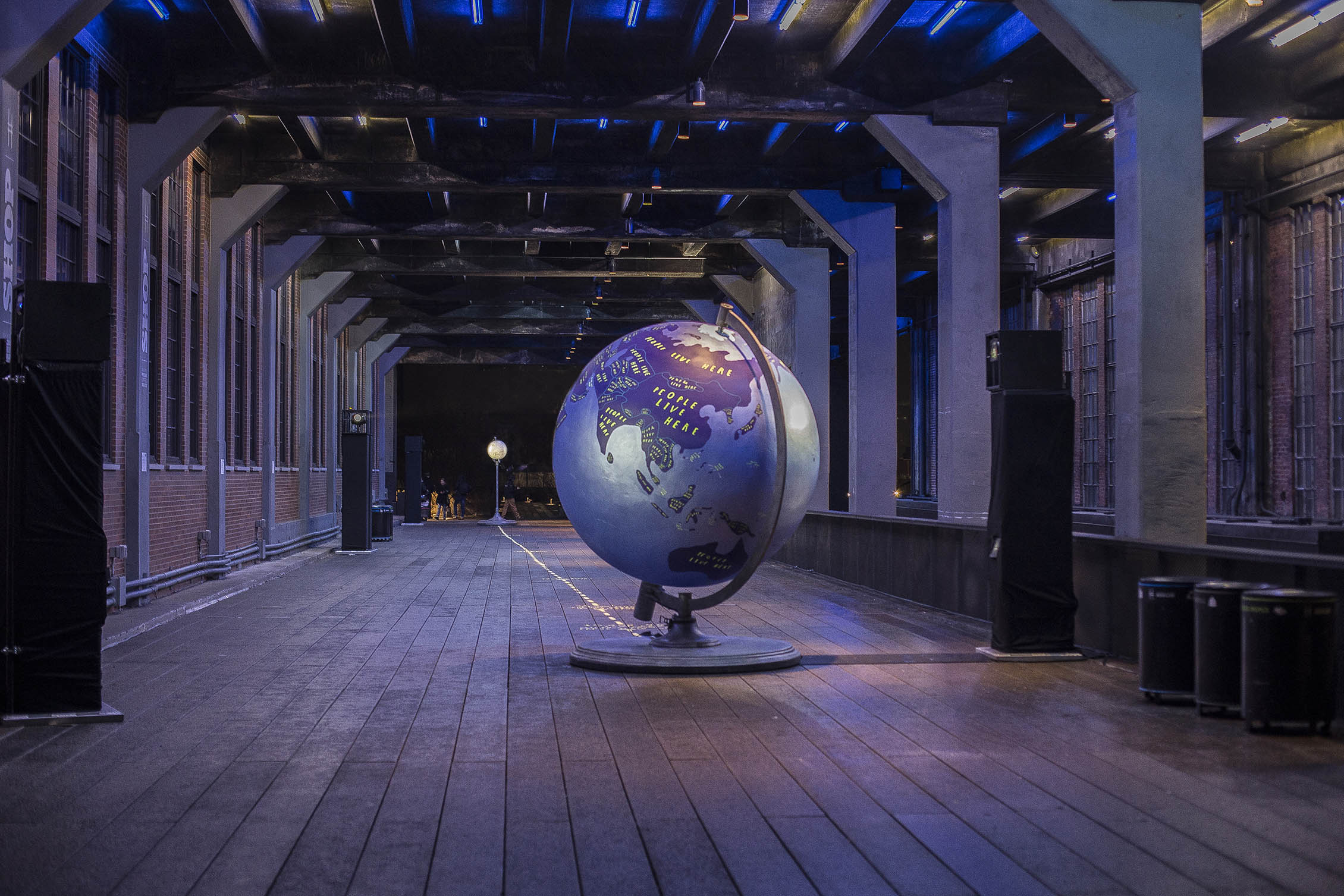
Oliver Jeffers is still talking about the total solar eclipse of 2017. You remember—the once-in-a-lifetime celestial event which spanned the entire contiguous United States. The national spectacle that brought us a slew of marriage proposals, live tweets, and our very own president peering into a partially eclipsed sun.
Visibility of the shrouding varied, as the path of totality covered only 16 percent of the country. I, for one, could not see anything from my hilly Los Angeles viewing place. But Jeffers, who traveled with his family to the path of totality in Tennessee, saw everything—and nothing.
“It’s like a black hole in the sky,” Jeffers says. “There’s magnitude in watching something so vast. In a total eclipse, you get a split second of new perspective. You feel infinitesimal.” Though with this last total eclipse, Jeffers says, it was more than a split second. And as the disk of the sun remained veiled by the moon, he began to feel smaller and smaller.
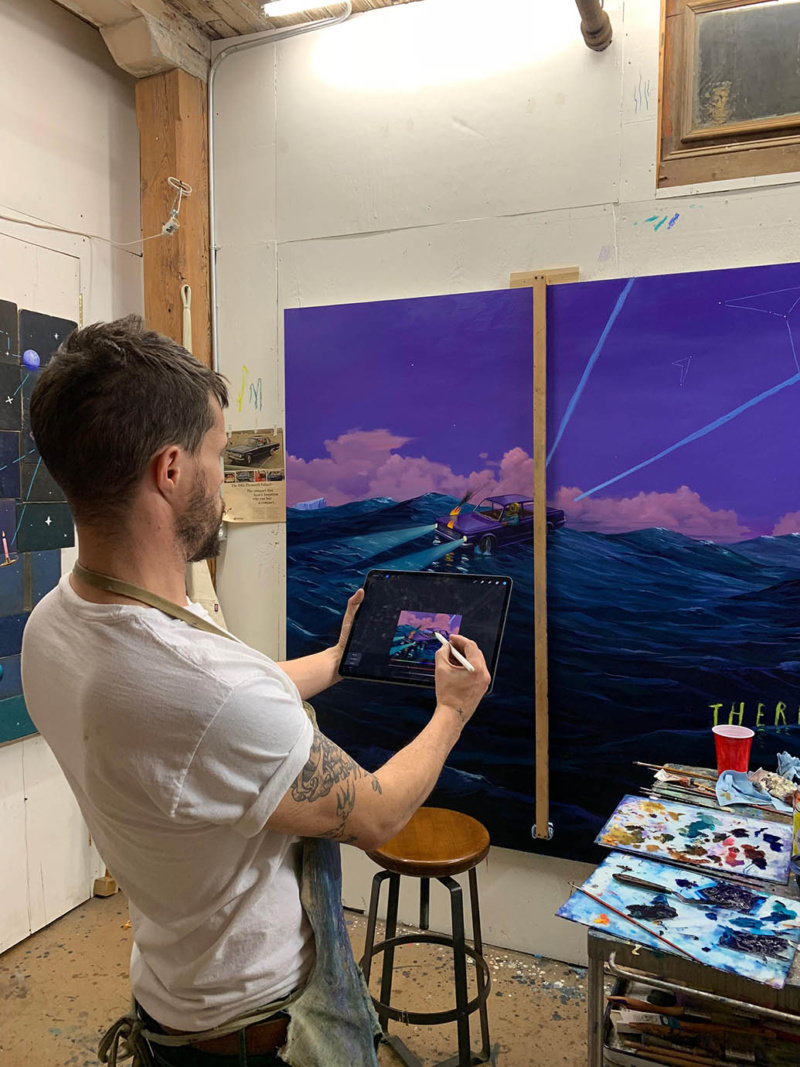
Perhaps best known for his illustrated children’s books, Jeffers has been intimately exploring themes of earth, space, galactic relativity and the unknown for some time now. But becoming a father in 2015, he admits, has caused him to do so with renewed urgency. “My son doesn’t know anything yet, so it’s up to me and his mother and his entire community to teach him absolutely everything. Both the gravity and the possibility in that were sort of terrifying and awe-inspiring at the same time.” In 2017, Jeffers published Here We Are: Notes for Living on Planet Earth. Dedicated to his son and much like his artwork, the book serves as an exploration of the unexplored. Constellations serve as connective tissue between the earthly and the celestial, while human figures are scaled dramatically against boundless purple skies.
In his latest series of oil paintings, many of which are drafted using an iPad Pro, Jeffers plays with crisis of identity at home—such as in his depictions of his native Belfast—and anxious wanderlust for a universe we’ll likely never know. The iPad acts as a mapping tool for imagining works before they’re realized in paint. Atop a high-resolution image of old book bindings arranged into a makeshift canvas, Jeffers shows me how he sketched a mobile-like pattern. The goal is to plot the whole painting so that nothing falls between the cracks. Otherwise, Jeffers tells me, it becomes difficult to paint.
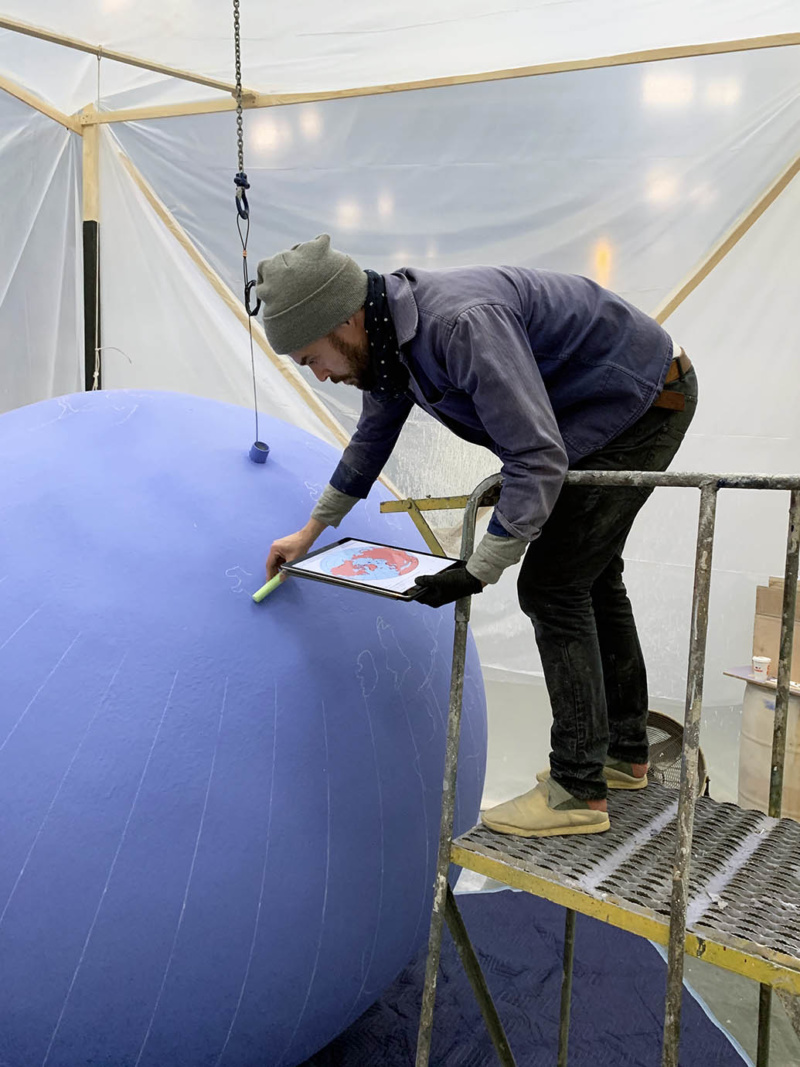
Inspired by American Futurist Buckminster Fuller, he uses earthly symbols like a piano and a car to represent the need for innovation and a lack of care for planet earth. “In a way, Earth is a spaceship with all of us aboard,” says Jeffers, referencing Fuller’s famous analogy. “If we treated it as a mechanical vehicle, things would be much different than they currently are.”
With his first New York solo exhibition at Bryce Wolkowitz Gallery in Chelsea on view through February 16, running in conjunction with his High Line debut which launches tonight, Jeffers approaches the earth and its solar system from a place of genuine curiosity. For All We Know, at Wolkowtiz, is about representing different perspectives and telling stories—stories of self and one’s place in the galaxy, stories that come to us through star gazes, through eclipses. Similarly, the High Line engages perspective through the lens of borders both galactic and earthly.

In The Moon, the Earth and Us, Jeffers explores the relationship between the Earth and its moon with two massive globes displayed at 15th and 16th streets. The surface of the moon reads, “No One Lives Here,” while each country on the Earth features the words, “People Live Here.” Nearly 50 years since the American moon landing, Jeffers intimates that the lunar body is still largely a thing of mystery, especially to us Americans who have trouble imagining a world beyond our own national boundaries. It’s a reminder that everyone matters, and as Jeffers tells me, that we’re “part of a greater system,” that it’s not just “you, your life, and your country,” that we are at once crucial and infinitesimal.

